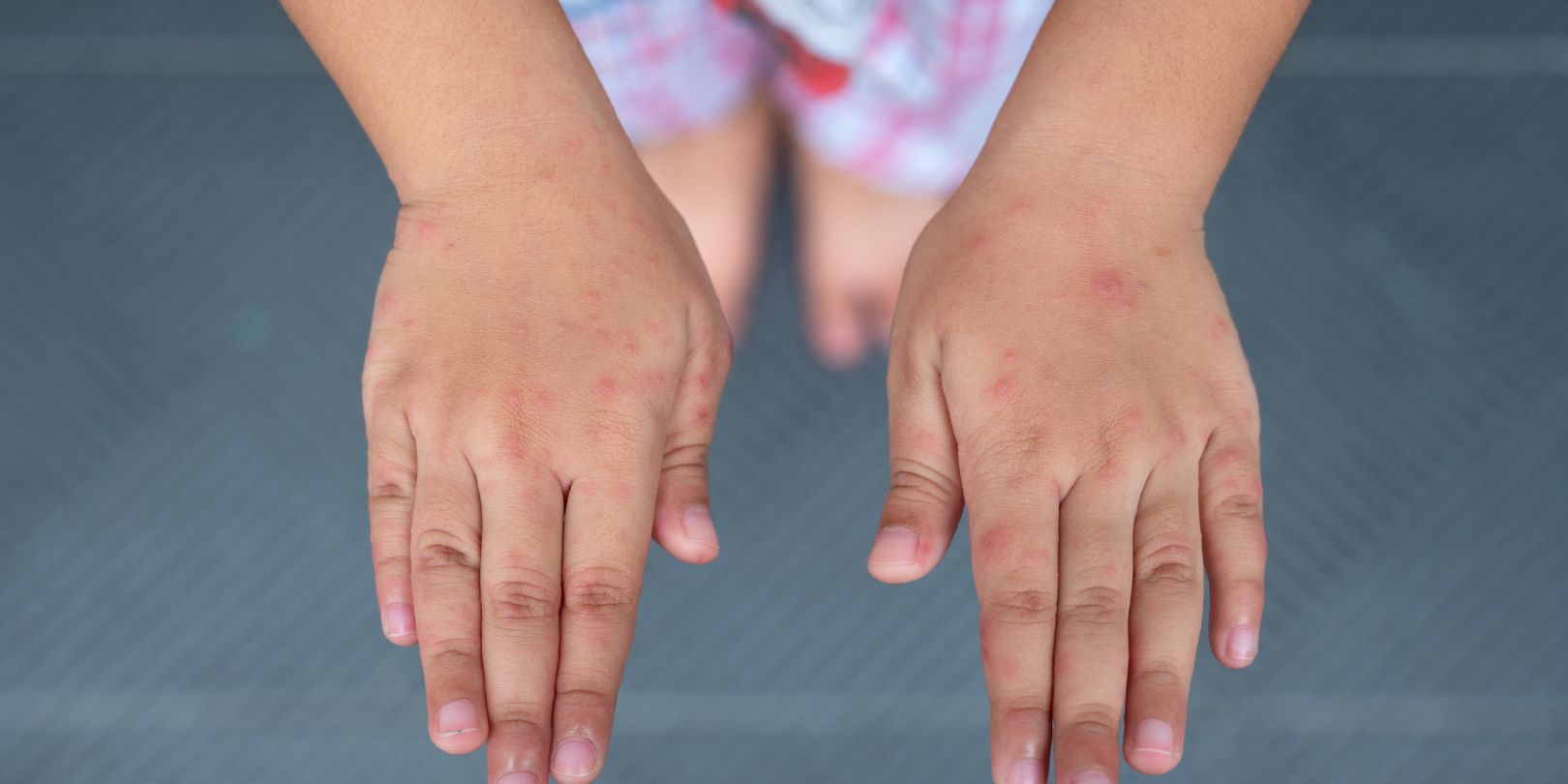Diaper Rash vs. Hand Foot Mouth: How To Tell the Difference

Parenting has its share of mysteries, and distinguishing between childhood ailments can be a head-scratching challenge. Among these, differentiating between diaper rash and hand, foot, and mouth disease often perplexes caregivers. In this guide, we unravel the intricacies of these conditions to help you confidently identify and address them.
Diaper rash, a common irritation caused by factors like friction and moisture, manifests in the diaper area. On the other hand, hand, foot, and mouth disease, a viral infection marked by painful blisters on hands, feet, and mouth, often accompanies fever. By understanding their unique traits, you can provide the right care promptly. So, let’s delve into the details and empower you to decode and manage these skin woes effectively.
Diaper Rash: The Basics
Diaper rash is a common skin irritation that affects infants and toddlers who wear diapers. It typically appears as red, inflamed skin in the diaper area, including the buttocks, genitalia, and inner thighs. This rash can range from mild redness to more severe irritation with raised bumps or open sores.
Causes of Diaper Rash
Diaper rash can stem from a variety of underlying causes. One common factor is friction, where the constant rubbing of the diaper against the delicate skin can lead to chafing and subsequent irritation. Prolonged exposure to moisture, primarily from urine and stool, is another significant contributor. This moisture softens the skin, making it more susceptible to irritation. Additionally, harsh chemicals present in diapers, wipes, and even detergents used for cloth diapers can provoke skin sensitivity and redness.
Yeast or bacterial infections can also trigger diaper rash. The warm and moist environment within a diaper provides an ideal setting for the growth of these microorganisms, which can exacerbate skin irritation. All these factors collectively underline the complex nature of diaper rash and the importance of proactive measures to prevent and address it.
Hand, Foot, and Mouth Disease: The Basics
Hand, foot, and mouth disease (HFMD) is a viral illness that commonly affects children under the age of five. Several types of viruses, including the coxsackievirus, cause HFMD, characterized by small, painful sores or blisters that can appear on the hands, feet, mouth, and occasionally on the buttocks.
Causes of Hand, Foot, and Mouth Disease
A viral infection primarily causes hand, Foot, and Mouth Disease (HFMD). This infection is commonly transmitted through close contact with individuals who are already infected, as well as contact with contaminated surfaces and exposure to respiratory secretions. The hallmark symptoms of HFMD include the development of blisters on the hands, feet, and the inside of the mouth. Additionally, children affected by HFMD may exhibit other symptoms such as fever, sore throat, and general malaise or discomfort.
Distinguishing Factors
The location of rash distinguishes diaper rash and Hand, Foot, and Mouth Disease (HFMD). Diaper rash primarily impacts the diaper area, while HFMD blisters typically occur on the hands, feet, mouth, and occasionally the buttocks. Diaper rash presents as red and irritated skin in terms of appearance, whereas HFMD is marked by fluid-filled blisters sensitive to touch. HFMD often comes with extra symptoms like fever, sore throat, and general discomfort. In contrast, diaper rash typically does not lead to these systemic symptoms. Another important differentiation lies in their modes of spread. Diaper rash does not transmit from person to person. In contrast, HFMD is highly contagious and can be easily spread through close contact, making it particularly prevalent in environments such as daycares and schools.
Treatment and Prevention
For diaper rash, maintaining cleanliness and dryness is crucial. Change diapers often, cleanse the area gently with mild soap, and allow the skin to air dry. Add a thin layer of zinc oxide or petroleum-based diaper rash cream to create a protective barrier between the diaper and the skin. Avoiding potential irritants is important, so opt for fragrance-free products and steer clear of wipes with alcohol. These measures collectively aid in relieving and preventing diaper rash.
In the case of HFMD, prioritizing rest and hydration is key. Ensure your child gets sufficient rest and stays hydrated, especially if they’re running a fever. You can use over-the-counter pain relievers like acetaminophen or ibuprofen to ease discomfort and reduce fever. Given HFMD’s contagious nature, it’s advisable to isolate your child from other children until they’re no longer contagious, as per guidance from a healthcare professional. Emphasizing hygiene practices is crucial in preventing HFMD’s spread—frequent handwashing and proper disinfection of surfaces can significantly curb its transmission.
Conclusion
In conclusion, distinguishing between diaper rash and hand, foot, and mouth disease is crucial for providing appropriate care for your child. Diaper rash is a common skin irritation caused by friction and moisture, primarily affecting the diaper area. On the other hand, hand, foot, and mouth disease is a viral infection characterized by painful blisters on the hands, feet, and mouth, often accompanied by a fever and other symptoms. By understanding the differences between these two conditions, you can take the necessary steps to soothe your child’s discomfort and ensure their speedy recovery. If you’re ever unsure about your child’s symptoms, don’t hesitate to consult a healthcare professional for guidance and proper diagnosis.